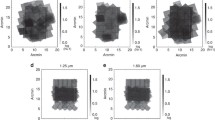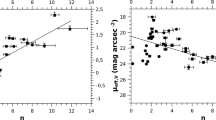Abstract
It is known that the correlation between the observed visible luminositym(z), angular dimension Θ(z) of galaxies on the red shiftz and theoretical relations of the standard cosmology is possible only under the assumption that the luminosity and object dimension evolution are equal toL(z) =L 0(z + 1)3.2 andl(z) =l 0(z + 1)−2, respectively. This evolution is hypothetical, since it is defined by a theory which is not confirmed by experience. In order to solve the problem on the reality of the Universe expansion, it is sufficient to prove or disprove these conclusions using methods of measurement independent of the theory. One of these methods consists of defining the dependence of the radiation spectra of galaxies and quasars onz which evidently is proportional to the spectrum of absolute luminosityL(λ, z). It has subsequently been shown that the spectrum form is practically independent of the red shift - i.e., it remains constant during the lifetime of galaxies and quasars. Consequently, to explain the luminosity increase required by the standard cosmology, it is necessary to admit a completely unreal entity (at all wavelengths of the optical spectrum increase) of the radiation spectral density of (z + 1)3.2 times. We can conclude that in reality the luminosity evolution is either absent or its power index is smaller at least by an order of magnitude. It is likely, therefore, that the established is the result of an inadequate standard in cosmology.
Another method is the use of the observed relations between the parameters ofL andl galaxies. A number of measurements made by different authors gives the relationlαL a, where 0.33≤a≤1.6. It then follows thatl(z)α(z + 1)3.2a. This dependence of the galaxy dimension is inverse to the dependence predicted by the standard cosmology. Besides, in order to make a correlation between thel(z)α(z + 1)3.2a and measurements of Θ(z), it is necessary that indices of the degree of luminosity evolution should be smaller by an order of magnitude.
Thus, the luminosity increase and simultaneous decrease of galaxy and quasar dimensions predicted by the standard cosmolog are not confirmed by the direct astrophysical measurements. This discrepancy is the consequence of an incorrect hypothesis of Universe expansion and the relativistic cosmology based on it.
Similar content being viewed by others
References
Baldwin, J. A., Wampler, E. J., and Gaskell, C. M.: 1989,Astrophys. J. 338, 630.
Folz, C. B., Chaffee, F. M., Hewett, P. C., Wegmann, R. J., Anderson, S. F., MacAlpine, G. M.: 1989,Astron. J. 98, 1959.
Hewitt, A. and Burbidge, G.: 1987,Astrophys. J. Suppl. Ser. 63, 1.
Hoessel, J. G., Oegerle, W. R., and Schneider, D. P.: 1987,Astron. J. 94, No. 5.
Kapahi, V. K.: 1987, in A. Hewitt, G. Burbidge, and Li Zhi Fang (eds.), ‘Observational Cosmology’,IAU Symp. 124, 251.
Lilly, S. J. and Gunn, J. E.: 1985,Monthly Notices Roy. Astron. Soc. 217, 551.
Marchall, H. L.: 1985,Astrophys. J. 229, 310.
Masson, C. R.: 1980,Astrophys. J. 242, 8.
Monk, A. S., Penston, M. V., Pettini, M., Blades, J. C.: 1988,Monthly Notices Roy. Astron. Soc. 234, 193.
Pelletier, R. F., Davis, R. L., Illingworth, G. D., Davis, L. E., Cawson, M.: 1990,Astron. J. 100(4), 1091.
Sandage, A. and Perelmutter, J.: 1991,Astrophys. J. 370, 455.
Schneider, D. P., Gunn, J. E., and Hoessel, J. G.: 1983,Astrophys. J. 268, 476.
Schneider, D. R., Schmidt, M., and Gunn, J. E.: 1989,Astron. J. 98, No. 5.
Smith, E. P. and Heckman, T. M.: 1989,Astrophys. J. Suppl. Ser. 69, 365.
Souček, J.: 1988,Astrophys. Space Sci. 141, 103.
Troitskii, V. S.: 1987,Astrophys. Space Sci. 139, 389 (DAN, USSR, 1989,290, No. 1).
Troitskii, V. S.: 1992,Astron. J., in press (in Russian).
Troitskii, V. S. and Gorbacheva, I. V.: 1989,Astron. J. 66, 470 (in Russian).
Troitskii, V. S., Gorbacheva, I. V., Suchkin, G. L., and Bondar, L. N.: 1992,Astrophys. Space Sci. 190, 9–22 (Astron. J., 1992, in Russian).
Veron-Cetty, M. P. and Veron, P.: 1989,A Catalog of Quasars, European Southern Observatory, p. 3.
Author information
Authors and Affiliations
Rights and permissions
About this article
Cite this article
Troitskii, V.S. Astrophysical observations exclude the hypothesis on the universe expansion. Astrophys Space Sci 201, 203–221 (1993). https://doi.org/10.1007/BF00627194
Received:
Issue Date:
DOI: https://doi.org/10.1007/BF00627194




